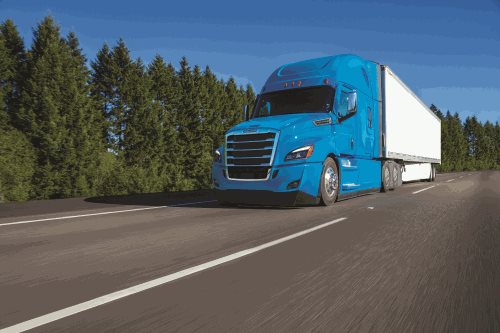
I am what one might call a "right lane dweller". My company governs our trucks at 65 mph, but in an effort to achieve good fuel economy, I generally run 60 unless the load requires that I run faster. Most of the time this means I am running slower than a lot of the vehicles around me. Because of this, I stick to the right lane as much as possible. This leads to some conversations about safety and road etiquette. Let me give you my view.
Safety
Many times I have been called a "Road Block" or a hazard. The argument is made that by going slower than the flow of traffic I am creating an unsafe condition on the road. I would like to pose a question to that point. Who is the unsafe one? The driver running over the minimum but less than the limit who is staying in the right lane, or the driver who is running at or above the limit who isn't paying enough attention to the road to see that there is a slower vehicle ahead of them?
I would answer the second driver. Many times the driver who is hammering down, coming up on the slower traffic isn't willing to slow down, even for a half minute or so, to let traffic open up for them so they can safely change lanes. In my own experience, I have had professional drivers ride my tail, trying to intimidate me out of the way. That isn't safe at all. Then I watch them whip out into the passing lane, another unsafe move and ride the tail of the vehicle they pulled in behind. But I'm the dangerous one.
The majority of rear-end collisions are caused by the rear vehicle either going too fast, following too close, not paying attention or a combination of the 3. It’s rarely caused by the vehicle in front going too slow or stopping. So again I ask, which one is the most dangerous?
Being Courteous Still Matters
None of this is to say I am oblivious to the realities of the road. There are things that I do to lessen the chance of a rear-end collision and be less of an obstruction to the flow of traffic. Being slower doesn't mean I have to be a jerk.
- Keep it in the right lane. Only move left to clear the lane for merging traffic or to pass a slower moving vehicle.
- Don"t be afraid to slow down a little bit more. Whether for merging traffic or to let a slightly faster truck pass, slowing down a mile or two more for just a bit can clear a potential back up and keep traffic moving around you.
- Be willing to accelerate if needed. Speeding up to allow traffic to merge or to get around a slower moving vehicle can also keep traffic flowing around you. Once clear of the other vehicle you can slow down again.
These suggestions work for professional drivers running governed trucks as well as for those of us who choose to run slower than the speed limit. For those interested, the lifetime average fuel economy for my 2018 Freightliner Cascadia is 9.91 miles per gallon. This is a pen to paper calculation at 287,000 miles. It has the AeroX package, a DD15 with 405 hp and 1750 fpt at 975 rpm. DT 12 AMT with 2:28 rears running wide-based singles with a 6x2 configuration. I run all lower 48, freight of all kinds. Whatever the customer loads, I haul.
No matter what lane you are in, remember to drive safe and be courteous out there.